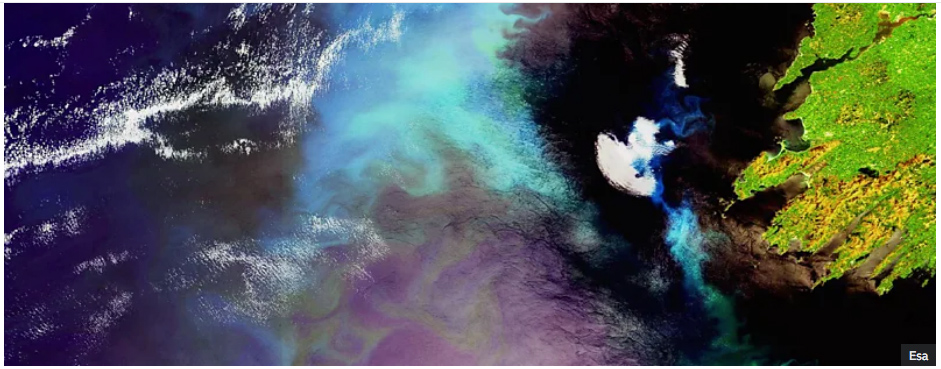The cause appears to be the spread of phytoplankton, tiny plants that form the base of the marine food web. They’re food for zooplankton, which are food for the rest of the food chain all the way up to whales.
Its escalation appears to be the result of climate change.
The study, published in Nature by scientists at MIT in the US and the National Oceanography Centre in the UK, found that these colour shifts – though subtle to the human eye – have occurred over 56% of the world’s oceans, mostly in the tropics, and cannot be explained by natural, year-to-year variability.
The shift means that ecosystems within the surface ocean must also be changing.
“I’ve been running simulations that have been telling me for years that these changes in ocean colour are going to happen,” says study co-author Stephanie Dutkiewicz of MIT.
“To actually see it happening for real is not surprising, but frightening. And these changes are consistent with man-induced changes to our climate.”
The ocean’s colour reflects what lies within its upper layers. Waters that are deep blue reflect very little life, whereas greener waters indicate the presence of ecosystems, mainly phytoplankton which contain green chlorophyll which the plants use to harvest carbon dioxide from the atmosphere.
The current study, headed by Dr BB Cael of the Oceanography Centre, analysed measurements taken by the Moderate Resolution Imaging Spectroradiometer aboard the Aqua satellite, which has been monitoring ocean colour for 21 years. The satellite takes measurements in seven visible wavelengths, including the two colours researchers traditionally use to estimate chlorophyll.
“The colour of the oceans has changed,” Dutkiewicz says.
“Changes in colour reflect changes in plankton communities that will impact everything that feeds on plankton. It will also change how much the ocean will take up carbon, because different types of plankton have different abilities to do that.
“So, we hope people take this seriously. It’s not only models that are predicting these changes will happen. We can now see it happening and the ocean is changing.”
 Average sea temperature. (Graphic: ERA5)
Average sea temperature. (Graphic: ERA5)
The latest European State of the Climate report, published in April 2024 by the European Union’s Copernicus Climate Service, found that chlorophyll levels on phytoplankton were 200% to 500% higher than average in the Norwegian sea and Atlantic Ocean north of the UK and 50% to 100% higher than average in the Mediterranean Sea.
The Copernicus Climate Service found that the world’s oceans have broken temperature records every single day over the past year, smashing existing highs for the time of year by the largest margin in the satellite era.
Planet-warming gases are mostly to blame, but the natural weather event El Niño has also helped warm the seas. The superheated oceans have hit marine life hard and driven a new wave of coral bleaching.
“The fact that all this heat is going into the ocean and, in fact, it’s warming in some respects even more rapidly than we thought it would, is a cause for great concern,” Professor Mike Meredith from the British Antarctic Survey told the BBC.
“These are real signs of the environment moving into areas where we really don’t want it to be and if it carries on in that direction the consequences will be severe.”
The march of phytoplankton parallels the rapid growth of trees and bushes as a result of higher levels of CO2 in the atmosphere, raising concerns about the impact on plains animals on savannah grasslands.
The reason is that leafy plants love carbon and our lifestyle is dishing it out in megatons every day. Phytoplankton – leafy sea plants – appear to be responding in the same way.
Is it a good or bad story? Does more of it mean more food for zooplankton so more krill and nutrition for the whole food chain?
More research is clearly needed. DM
https://www.youtube.com/watch?v=REeWvTRUpMk




 Average sea temperature.
(Graphic: ERA5)
Average sea temperature.
(Graphic: ERA5) 